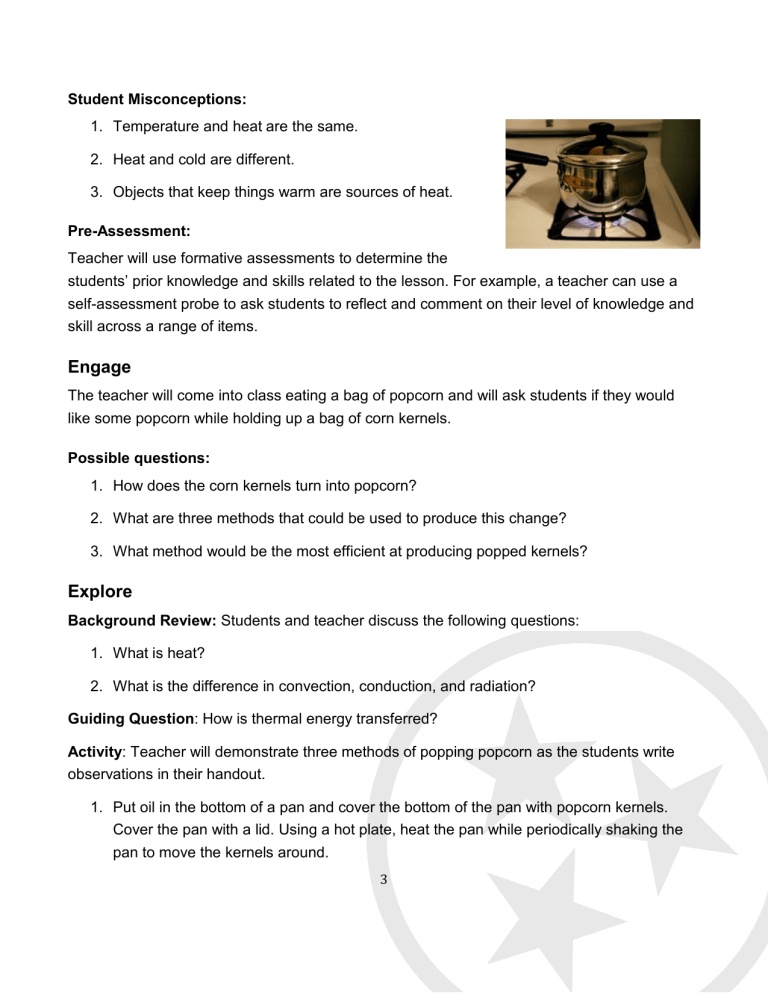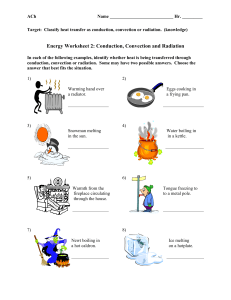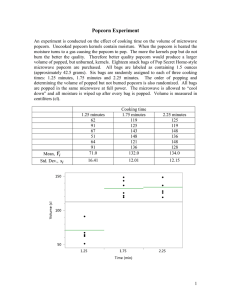
Student Misconceptions: 1. Temperature and heat are the same. 2. Heat and cold are different. 3. Objects that keep things warm are sources of heat. Pre-Assessment: Teacher will use formative assessments to determine the students’ prior knowledge and skills related to the lesson. For example, a teacher can use a self-assessment probe to ask students to reflect and comment on their level of knowledge and skill across a range of items. Engage The teacher will come into class eating a bag of popcorn and will ask students if they would like some popcorn while holding up a bag of corn kernels. Possible questions: 1. How does the corn kernels turn into popcorn? 2. What are three methods that could be used to produce this change? 3. What method would be the most efficient at producing popped kernels? Explore Background Review: Students and teacher discuss the following questions: 1. What is heat? 2. What is the difference in convection, conduction, and radiation? Guiding Question: How is thermal energy transferred? Activity: Teacher will demonstrate three methods of popping popcorn as the students write observations in their handout. 1. Put oil in the bottom of a pan and cover the bottom of the pan with popcorn kernels. Cover the pan with a lid. Using a hot plate, heat the pan while periodically shaking the pan to move the kernels around. 3 2. Place some popcorn kernels in a popcorn popper and turn on the popper. Hot air will transfer heat to the kernels, causing them to expand and pop. 3. Pop a bag of microwavable popcorn in a microwave. 4. Students should count the ratio of popped kernels to unpopped kernels for each method and place their numbers in a chart on their handout. 5. Students will identify each method as being convection, conduction, or radiation. Suggested Discussion Questions: 1. What was the effect of each method of heat transfer to the popcorn? 2. Which method was the most efficient? Explain Show the video Science for Kids: Heat Energy Video Explain thermal energy, convection, conduction, and radiation through presentation, notes, etc. See Teach Engineering Website for explanations of each type of energy. Make a connection to thermal energy, conduction, convection, and radiation through demonstrations as each is discussed: 1. Thermal energy demonstration a. Prepare two transparent cups of hot and cold water. b. Place a drop of food coloring in each cup and direct students to see what happens. c. Students should notice that the food coloring spreads out more quickly in the hot water than in the cold water. 2. Conduction demonstration a. Preparation: Use drops of candle wax to “glue” two or three small nails or thumb tacks to a metal rod. b. Space the nails/thumb tacks about 1 inch apart, with the first one located one to 4




